This blog helps you learn How to spot termite damage and find signs of termite damage in wood.
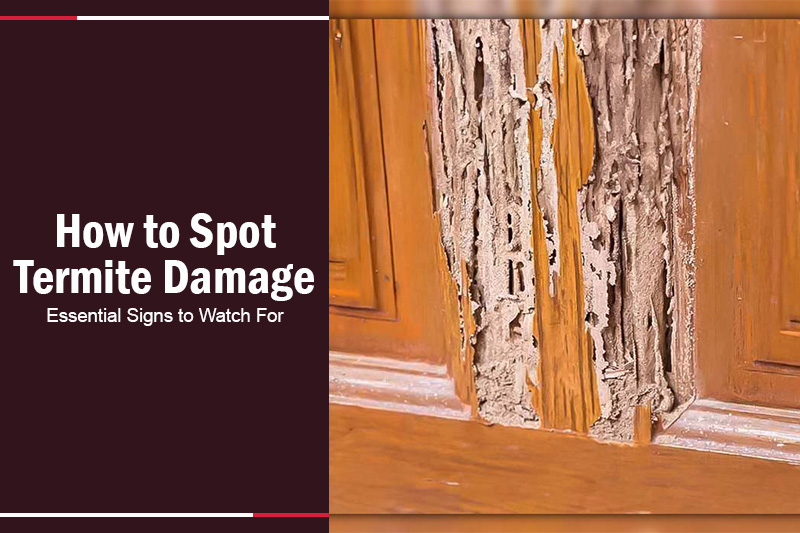
How to Spot Termite Damage? (12 signs)
1. Buckling or Blistering in Wooden Flooring
If your wooden floors are bending or look bumpy, it might be because of termites.
These bugs can damage the wood underneath your floors, causing the surface to look uneven or stained.
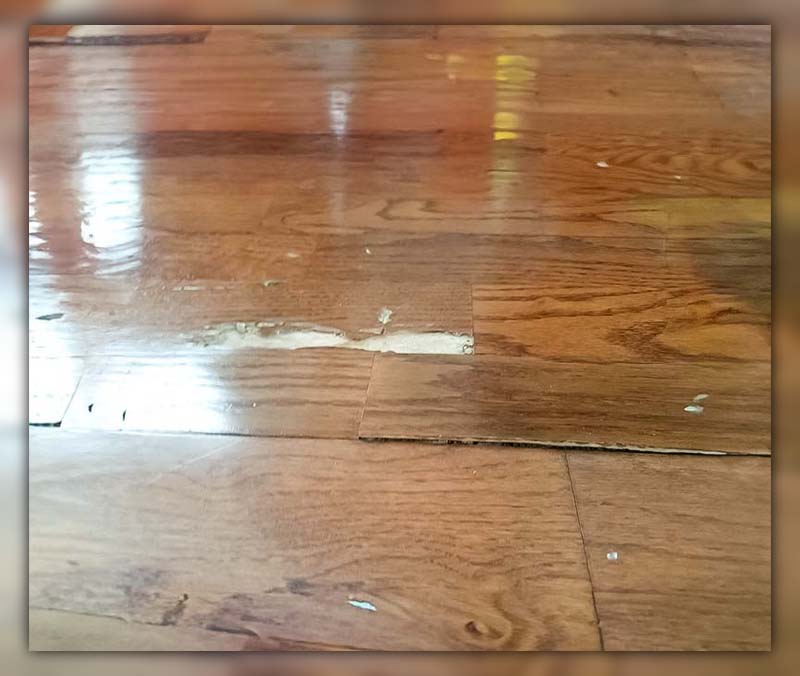
2. Hollowed or Impaired Wood
If there’s damage to your wooden structures, termites could be hiding in your walls and under your floors. These tiny bugs eat wood from the inside, making them difficult to detect.
They create tunnels in the wood beams of your walls, which can sound empty when you tap on them. If this goes on for too long, they can weaken the wood and cause major damage to your home.
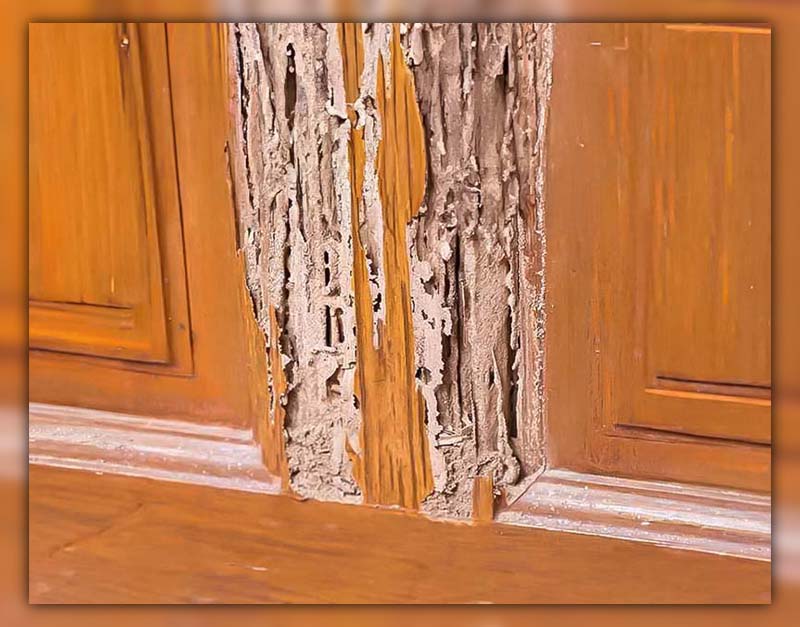
3. The Presence of Flying Termites
Swarmers are winged termites that leave their colony to start new ones. They fly away to find mates and establish new colonies. This swarming often occurs at certain times of the year and you might see hundreds or thousands of them together.
Seeing many flying termites near your home is a sign that there might have been termites living nearby for a while.

4. Discarded Termite Wings
You might find dropped termite wings close to shut windows, doors, and other ways into your house. Termites are drawn to the light outside, so they fly towards windows. When they settle down, they purposely get rid of their wings since they won’t use them again.
If you spot heaps of these wings, it doesn’t mean the termites are gone; they could be nearby, working hard to set up a new colony.
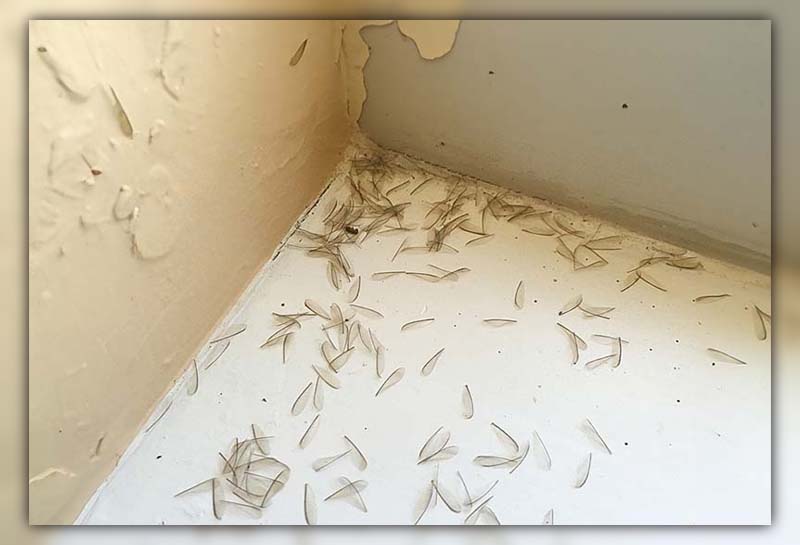
5. Difficulty In opening doors and windows
When termites eat through wood to reach the cellulose they feed on, they damage the wood, causing it to warp or twist. This can make doors and windows difficult to open or close.
If your windows and doors are sticking or won’t close properly, it could be an early sign that you have termites.
6. Existence of Mud Tubes
Subterranean termites live below ground and travel upwards to reach their food, which is usually part of a house.
You might spot thin mud tunnels about the width of a pencil where the soil touches your home or other wood sources like trees or sheds.
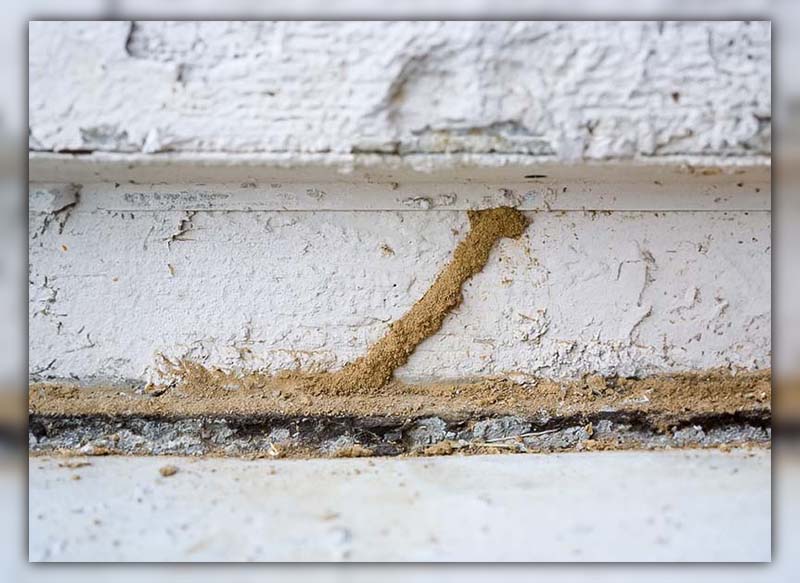
7. Drywood Termite Droppings
Drywood termites live inside wood itself. While they tunnel and feed on the wood, they create pathways known as galleries. To keep these pathways clean, they create tiny holes to push out their waste.
Since these termites consume wood, their waste is wood-based too. They eject these droppings from their nests, leading to small piles on windowsills or floors that resemble sawdust or coffee grounds. Spotting these piles can be a sign of drywood termites nearby.
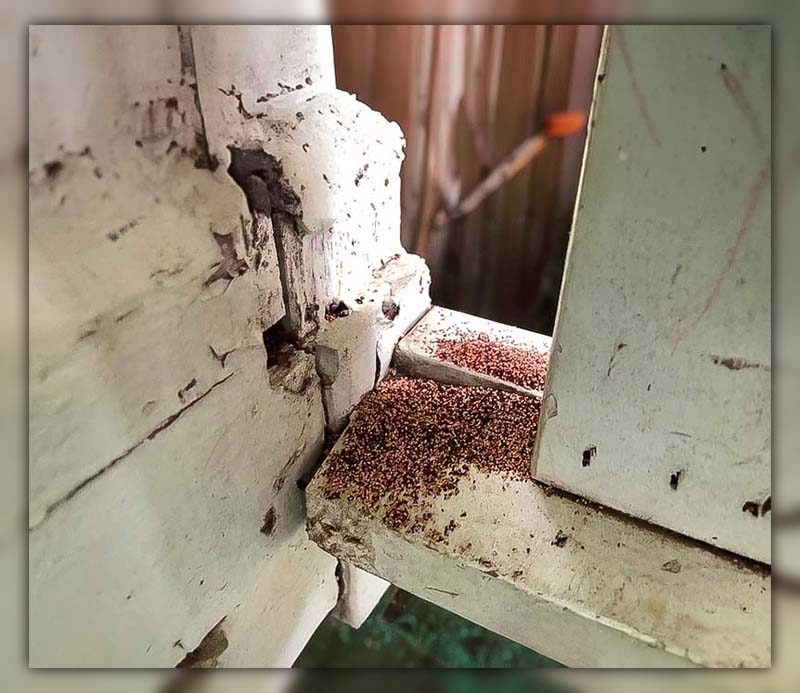
8. Discovery of live Termites during remodeling
If you’re fixing up your home, look out for termites in the old wood you’re removing. A lot of times, people find termites when they’re renovating. It’s good to remember that getting rid of the damaged wood won’t get rid of the termites.
They might be living in the dirt near your house, in wet or rotting wood parts of your home, or anywhere on your land where there’s dead wood, like old tree stumps or firewood.
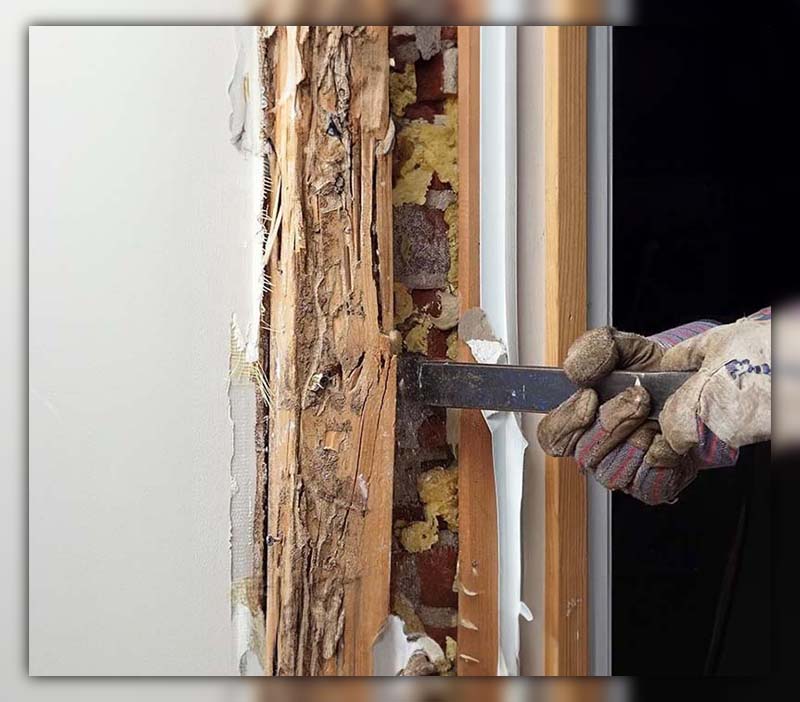
9. Damaged Drywall with Bubbling Under Paint or Wallpaper
Drywall contains paper, which has cellulose, a favorite food of termites. As they feed, termites leave behind small trails visible on or within the drywall. You might notice tiny, pin-sized holes in your drywall or wallpaper where termites have been feeding.
These small holes often have a bit of dirt on them. If your wallpaper or paint appears to be bulging, it might indicate the presence of termites.
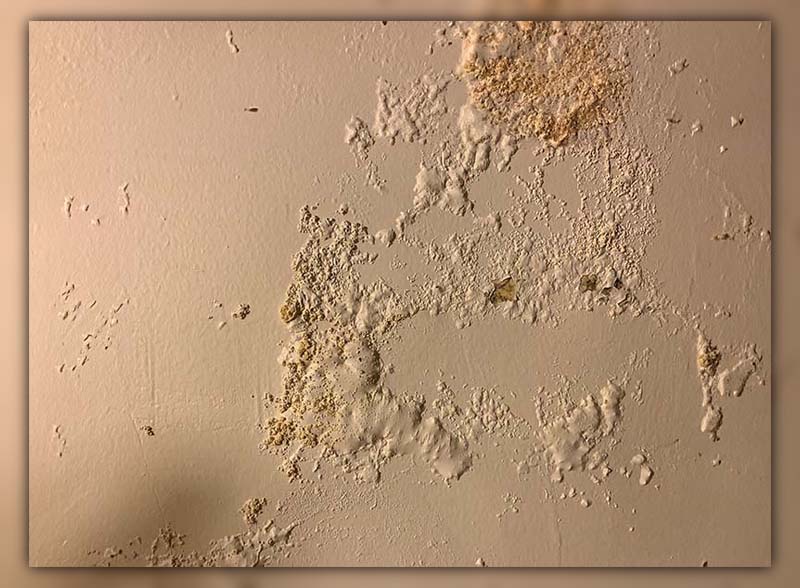
10. Identification of Musty Odors
Termites are drawn to wet wood, which usually smells a bit like mildew.
If you catch a whiff of something stale or musty and can’t tell where it’s coming from, it’s a smart move to reach out to a termite specialist in your area to take a look.
11. Ceilings Sagging, Support Beams Showing Signs of Buckling, or Experiencing Other Significant Structural Damage
Termites can cause significant damage to the structure of your building. They eat the support beams, leading them to bend and weaken the overall stability of your home.
For example, beams damaged by termites can result in sagging ceilings and floors that warp. The continuous tunneling by termites can cause the wood to deteriorate. Repairing this type of damage can be very difficult and costly.
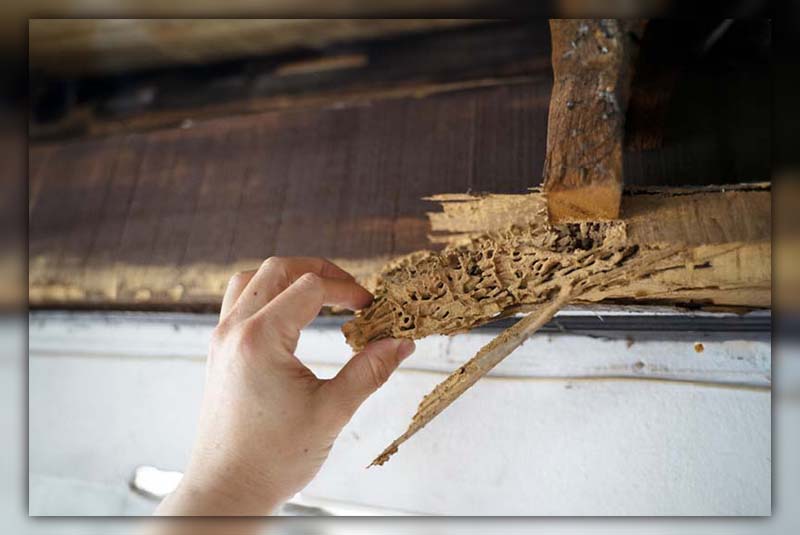
12. Excessively Creaky Floors with Tiles Gradually Coming Loose
When termites munch on your floor or the wood under it, they can make tiles start to move around. If you have wooden floors, termites eating them can make the boards bend and stick out.
This makes your floor noisy when you walk across it, especially where the wood is all chewed up.
How quickly can Termites inflict damage?
Big termite colonies with their huge appetites can be tough pests to deal with. The trouble with termites is they cause damage little by little, over a long period. If termites settle into your place, they can secretly eat away at the wood for years.
The cost to fix termite damage can be high, especially when they’ve hurt the solid structure of a house. And just because you don’t see any termites, it doesn’t mean they aren’t there. Sometimes, you won’t notice termite damage until it’s severe and the structure of your home has already been weakened.
Conclusion
In short, learning how to spot termite damage is an essential skill for maintaining the health and stability of your home.
For more tips and tricks on keeping your home pest-free, make sure to check out the wealth of information on Pestweek’s blogs.

Calina Mabel has over 15 years of experience in the field of journalism and communications. Currently, Calina Mabel is the Content Writer for categories such as Cockroach, Ants, Bed Bugs, Mosquito, Rodent, Termite, and Flies on Pestweek.com. She aims to build content for these categories with a focus on providing valuable and accessible information to readers, in order to create the world’s largest knowledge community about Pests.
All content written by Calina Mabel has been reviewed by Emily Carter.

